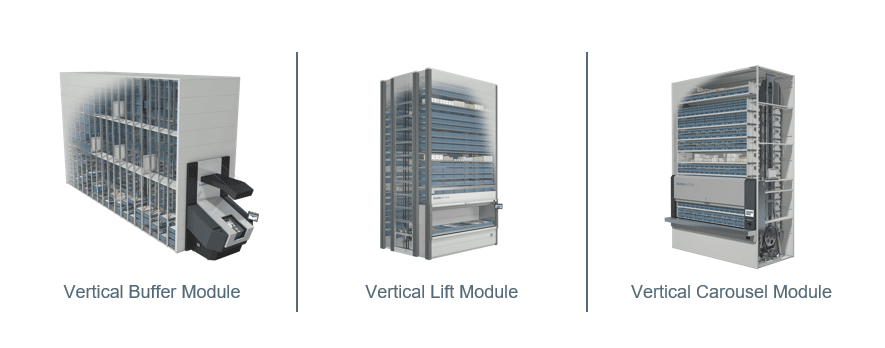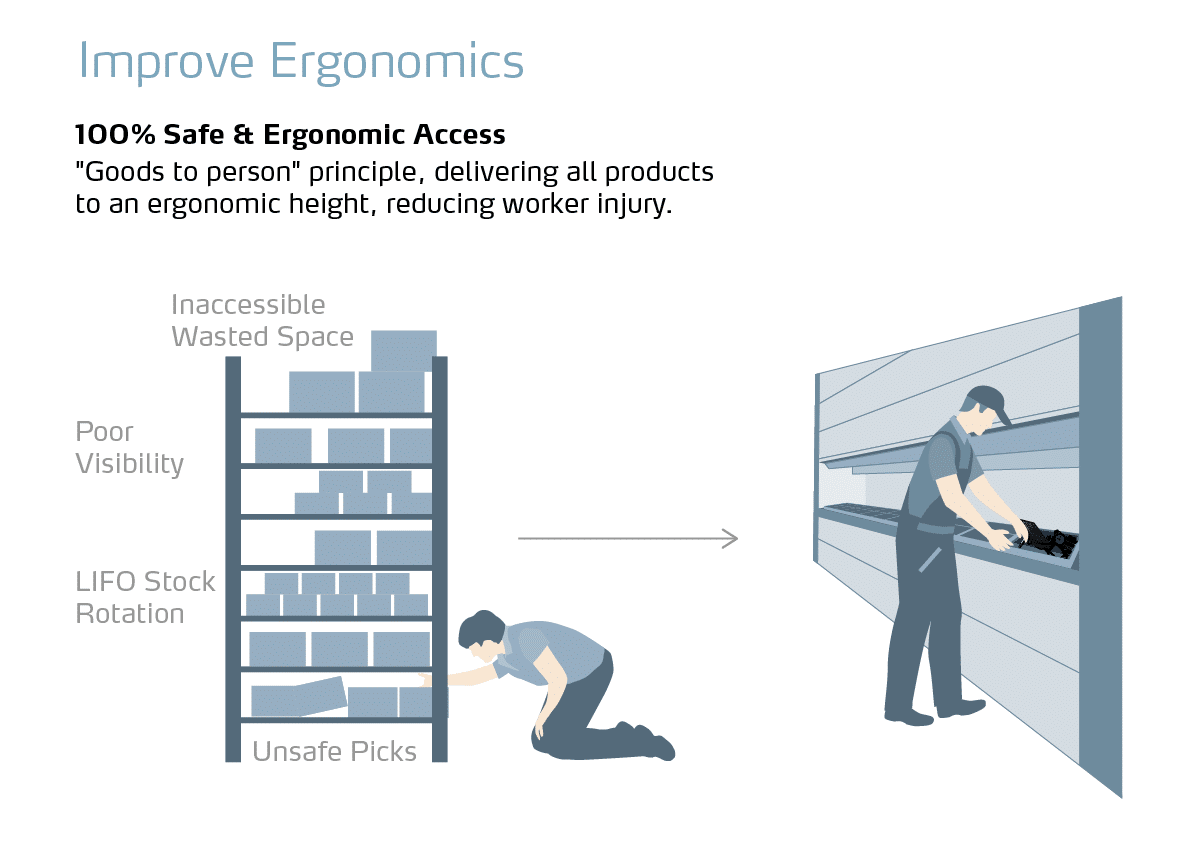Is picking parts putting your employees at risk of injury? Are you feeling the impact of worker compensation claims? Take a look at the financial impact of poor warehouse ergonomics in your operations.
According to OSHA, serious, non-fatal workplace injuries cost U.S. businesses billions of dollars every year. Two top factors associated with physical exertion most frequently seen in retrieval of stored items are:
# 1: Overexertion injuries, involving “lifting, pushing, pulling, holding, carrying or throwing, cost businesses $13.8 billion in direct costs and accounted for nearly one quarter of the overall national burden.”
# 2: Exertion/reaction injuries resulting from tasks such as bending, crawling, reaching, twisting, climbing, stepping, kneeling, sitting, standing or walking, were responsible for 6.5% of the overall injury burden, costing U.S. businesses $3.9 billion.
Workers’ compensation insurance covers the direct costs of occupational injury and illness, such as medical costs and wage replacement (indemnity). How much might an ergonomic injury cost?
The average cost of a back injury related workers comp claim can be $40,000 – $80,000 per employee.
On top of that, employers experience significant indirect costs associated with a worker injured on the job — from two to 20 times higher than direct costs. That’s because there are so many hidden or unanticipated expenses resulting from an employee injury. It doesn’t take much for this to add up.
If you’re spending this kind of money on workers comp claims instead of on revenue generating activities, it’s time to revisit the ergonomics of your warehouse or distribution facility. Because right now, your money is being wasted on injuries that could be prevented.
This doesn’t have to be the norm. To improve your employees performance and reduce worker injury, organizations are deploying ergonomically designed warehouse automation systems and you could too.
Dynamic storage and retrieval systems are key to improving warehouse ergonomics; they help workers complete picking and order fulfillment tasks while simultaneously eliminating the risk of injury. In addition to enhancing warehouse safety, the devices can boost productivity and reduce a variety of costs – positioning both workers and companies for operational success. And the cost justification for these systems is easy.
Deliver Goods to the Golden Zone
Let’s take a look at your options. To minimize the exertion injuries associated with manual material handling processes (including lifting, reaching, walking, stretching, bending, stooping, pulling, pushing, twisting, gripping and climbing), a variety of automated goods-to-person storage and retrieval systems exist that utilize the “Golden Zone” principle. These include: Vertical Buffer Modules, Vertical Lift Modules and Vertical Carousel Modules.
Workers in a conventional warehouse spend as much as 60% of their time walking to product, searching for it and climbing on a ladder or kneeling down to access stored items. These three automated solutions improve warehouse safety by eliminating this unproductive and physically tiring travel and search time. Instead, required items are delivered directly to the operator at an ergonomic position known as the “golden zone”, or waist-high. As a result, picking productivity can increase by as much as 600%! Hello – that’s more orders out the door and more money in your pocket.
Reducing all of the walking and search time we just talked about also makes workers less-fatigued resulting in a more alert worker, which means more accurate picking. Minimizing this fatigue keeps workers focused on the task at hand. Equipping your sparkly new automated storage and retrieval system with light directed picking systems can also further reduce picking errors, resulting in up to 99.9% accuracy. Less picking errors = more satisfied customers!
There are other options to improve warehouse ergonomics and safety depending on your business. Are your employees lifting really heavy parts? Don’t make them do it by hand – avoid the risk of injury by integrating an ergonomic hoist so they don’t have to lift that impossibly heavy part. It’s not worth it. The investment in a hoist will have a faster ROI than any workers comp claim.
If ergonomic benefits are only part of your problem, additional benefits include highly dense storage, reducing floor space requirements by as much as 85%; fast access times; computerized inventory control for simplified warehouse management; and interface modules that communicate with other warehouse management systems (WMS) and enterprise resource planning (ERP) systems. Stop letting workers comp claims pull your bottom line down. By implementing dynamic storage and retrieval systems, your work environment can be much more conducive to productive, efficient work. And those workers comp claim payments will stay in your “pocket” instead!
Contact an Andersen Material Handling Kardex Remstar expert for more information or to get started on improving your warehouse ergonomics.


